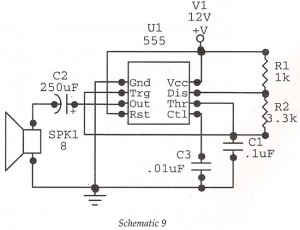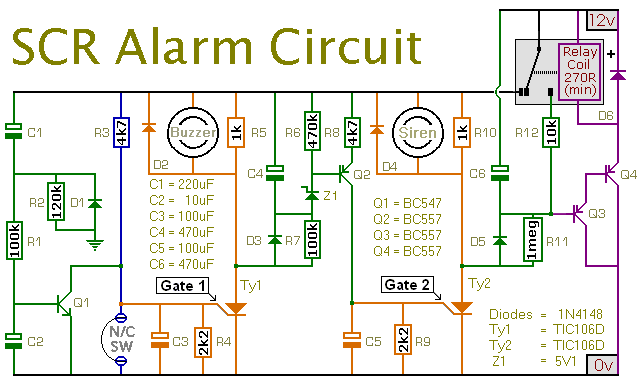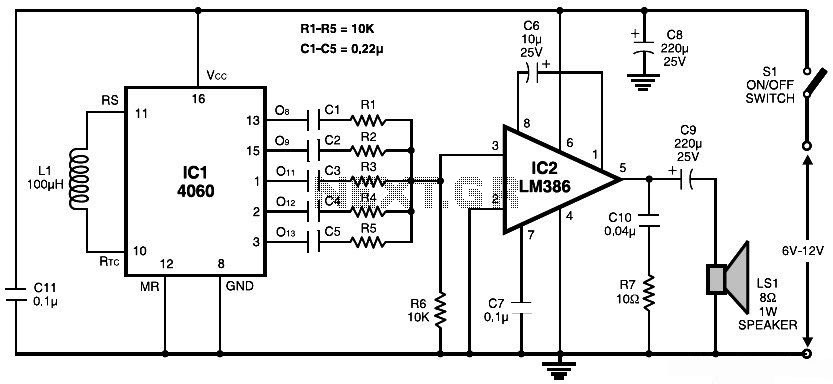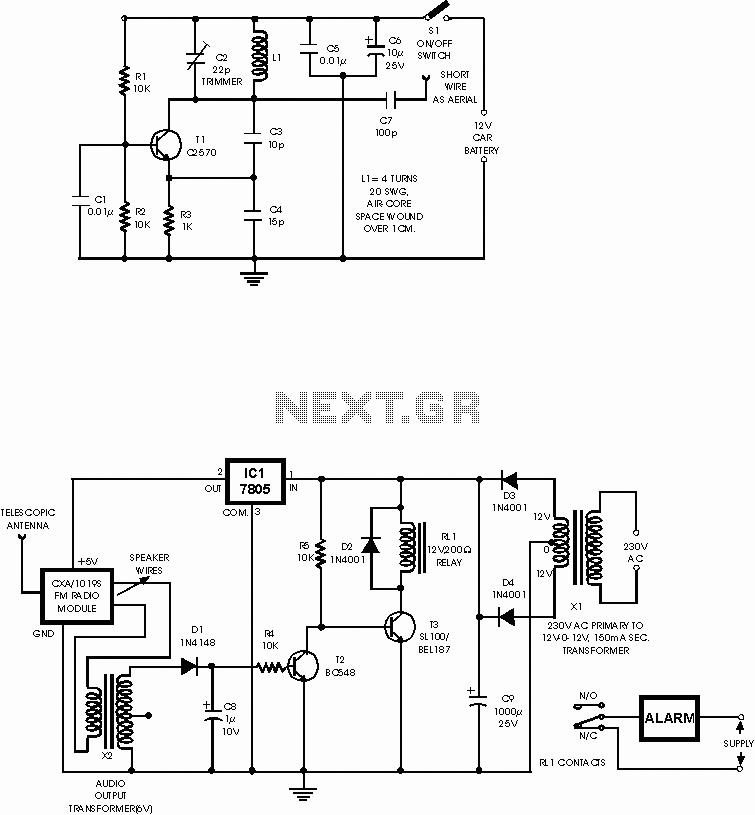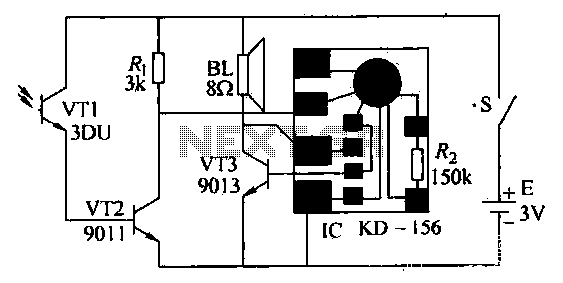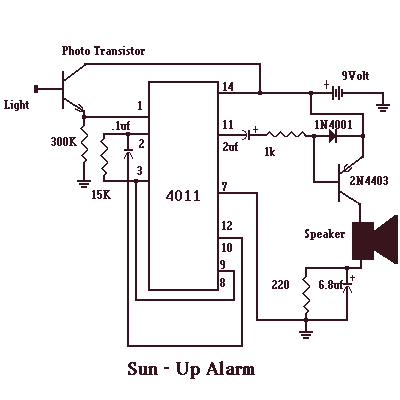
Domestic Seismic Alarm
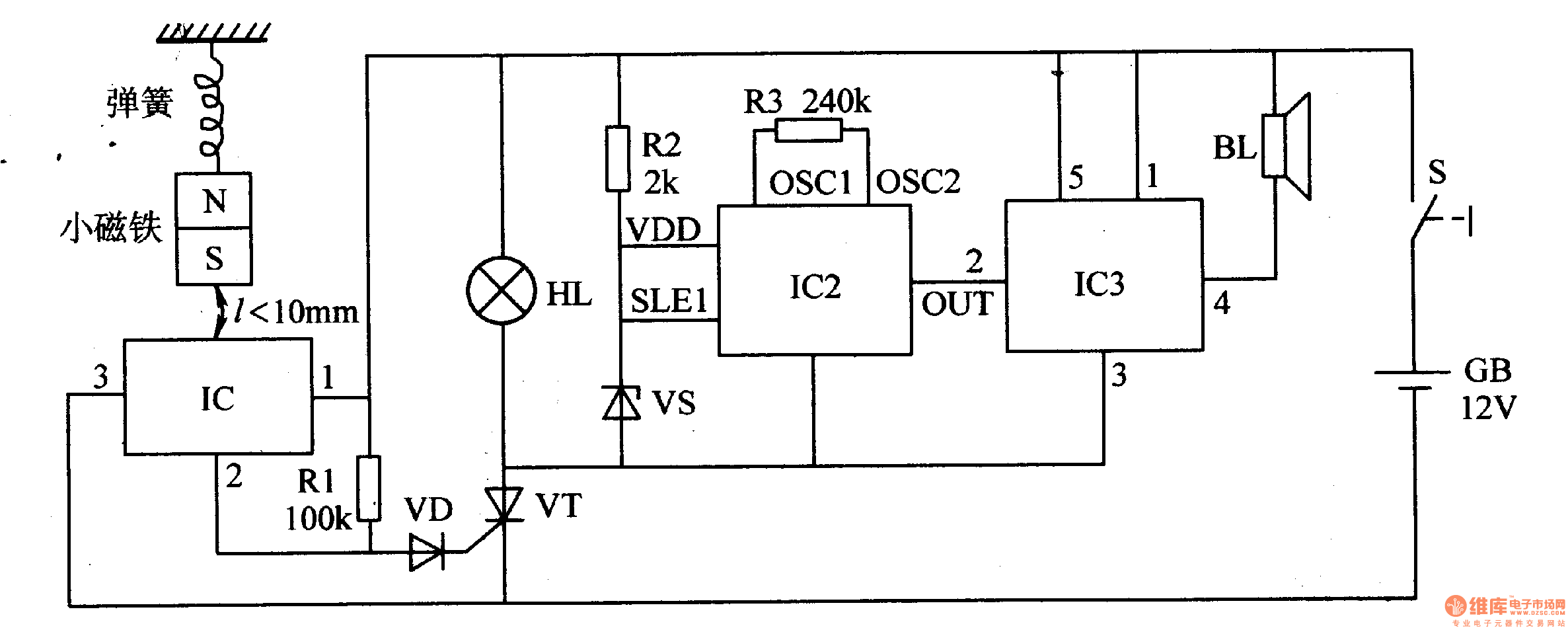
When the switch is activated, the seismic alarm enters a detection mode. In the absence of an earthquake, pin 3 of IC1 outputs a low signal, resulting in the disconnection of VT, which keeps the alarm circuit inactive. Upon the occurrence of an earthquake, the magnet shifts vertically. As it moves away from IC1, pin 3 of IC1 outputs a high signal, connecting VT and illuminating HL. Subsequently, IC2 and IC3 are activated. The sound signal generated by IC2 is amplified by IC3, causing BL to emit an alarm sound.
The seismic alarm circuit consists of several key components that work together to detect seismic activity and trigger an alarm. The core of the system is IC1, which serves as the primary detection unit. When the switch is turned on, it enables the detection mode, allowing the circuit to monitor for seismic events.
In its idle state, when no earthquake is detected, IC1's pin 3 remains low, ensuring that VT (which may represent a relay or transistor) is not activated. This state prevents any current from flowing through the alarm circuit, keeping the system in a standby mode. The magnet is positioned close to IC1, maintaining a stable state.
Upon the detection of seismic activity, the magnet's movement causes it to shift vertically. This movement alters the magnetic field around IC1, prompting pin 3 to switch to a high state. This transition activates VT, allowing current to flow through the circuit and illuminating HL, which likely serves as a visual indicator of an alarm condition.
With VT activated, additional integrated circuits IC2 and IC3 come into play. IC2 is responsible for generating an audio signal in response to the detected seismic activity. This signal is then sent to IC3, which functions as an audio amplifier. IC3 boosts the sound output from IC2, ensuring that the alarm sound produced by BL (the buzzer or speaker) is loud enough to alert individuals in the vicinity of the seismic event.
Overall, the circuit is designed to provide a reliable alarm system for detecting earthquakes, combining visual and auditory signals to ensure effective communication of the alarm condition. The integration of multiple ICs allows for efficient processing of seismic signals and amplification of the alarm sound, enhancing the system's responsiveness and reliability.When the switch is on, the seismic alarm isin detection condition. When there is no earthquake, IC1`s pin 3 outputs low level and VT is disconnected. The alarm circuit does not work. When there is an earthquake, the magnet will move vertically. When it is away from IC1, IC1`s pin 3 outputs high level and VT is connected. HL is illuminated. IC2 and IC3 begin to work. When the sound signal output by IC2 is amplified by IC3, BL will make an alarm sound. 🔗 External reference
The seismic alarm circuit consists of several key components that work together to detect seismic activity and trigger an alarm. The core of the system is IC1, which serves as the primary detection unit. When the switch is turned on, it enables the detection mode, allowing the circuit to monitor for seismic events.
In its idle state, when no earthquake is detected, IC1's pin 3 remains low, ensuring that VT (which may represent a relay or transistor) is not activated. This state prevents any current from flowing through the alarm circuit, keeping the system in a standby mode. The magnet is positioned close to IC1, maintaining a stable state.
Upon the detection of seismic activity, the magnet's movement causes it to shift vertically. This movement alters the magnetic field around IC1, prompting pin 3 to switch to a high state. This transition activates VT, allowing current to flow through the circuit and illuminating HL, which likely serves as a visual indicator of an alarm condition.
With VT activated, additional integrated circuits IC2 and IC3 come into play. IC2 is responsible for generating an audio signal in response to the detected seismic activity. This signal is then sent to IC3, which functions as an audio amplifier. IC3 boosts the sound output from IC2, ensuring that the alarm sound produced by BL (the buzzer or speaker) is loud enough to alert individuals in the vicinity of the seismic event.
Overall, the circuit is designed to provide a reliable alarm system for detecting earthquakes, combining visual and auditory signals to ensure effective communication of the alarm condition. The integration of multiple ICs allows for efficient processing of seismic signals and amplification of the alarm sound, enhancing the system's responsiveness and reliability.When the switch is on, the seismic alarm isin detection condition. When there is no earthquake, IC1`s pin 3 outputs low level and VT is disconnected. The alarm circuit does not work. When there is an earthquake, the magnet will move vertically. When it is away from IC1, IC1`s pin 3 outputs high level and VT is connected. HL is illuminated. IC2 and IC3 begin to work. When the sound signal output by IC2 is amplified by IC3, BL will make an alarm sound. 🔗 External reference
Warning: include(partials/cookie-banner.php): Failed to open stream: Permission denied in /var/www/html/nextgr/view-circuit.php on line 713
Warning: include(): Failed opening 'partials/cookie-banner.php' for inclusion (include_path='.:/usr/share/php') in /var/www/html/nextgr/view-circuit.php on line 713
